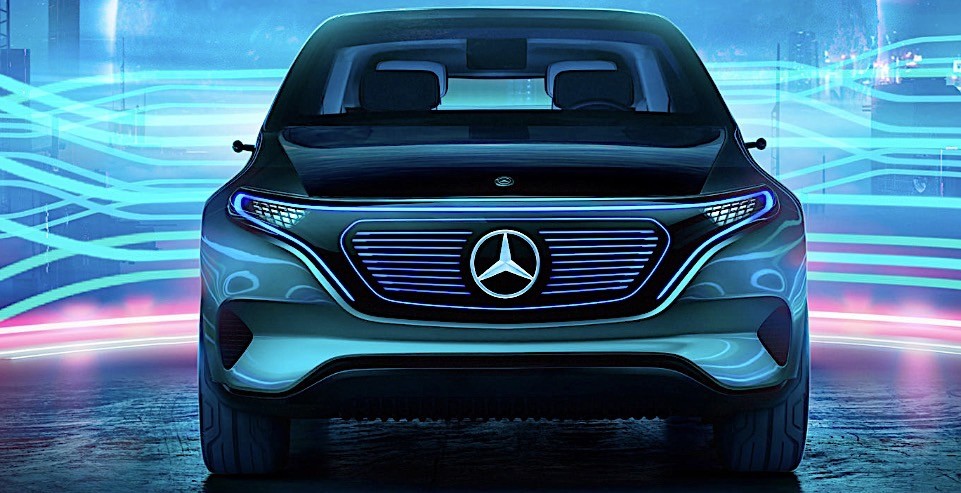
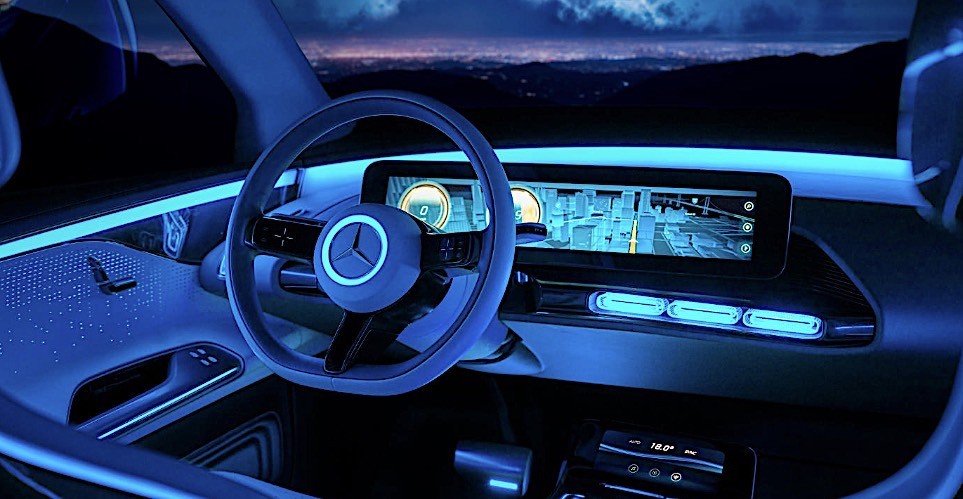
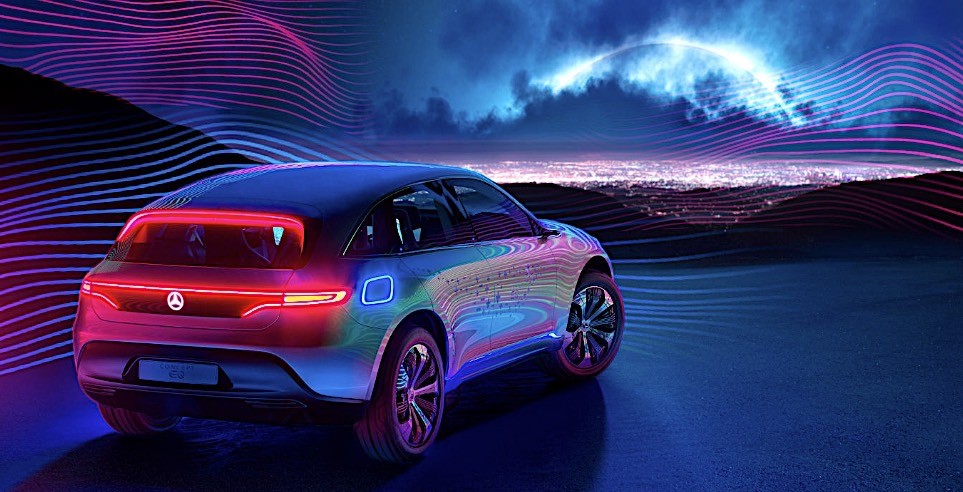
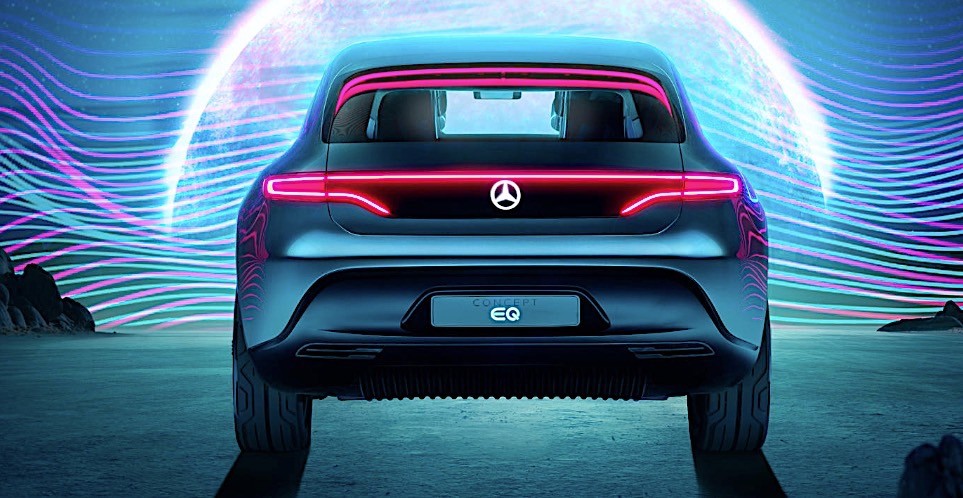
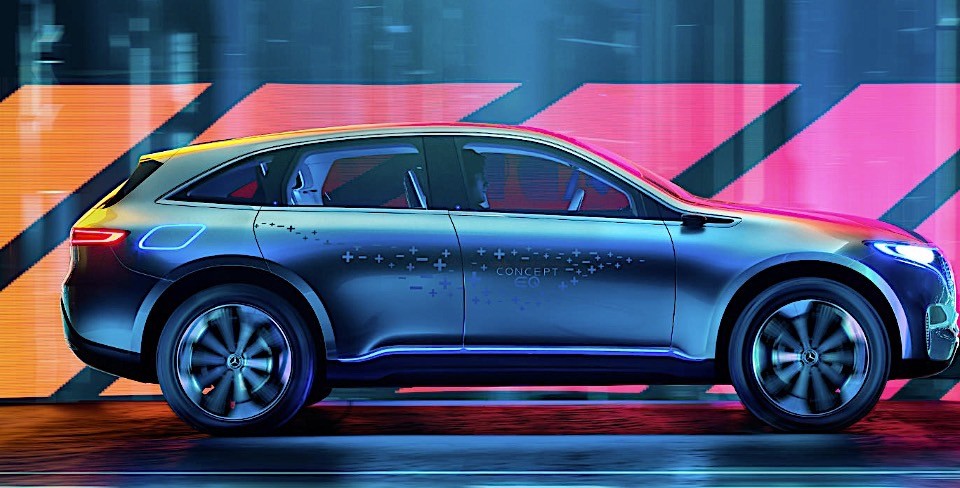 With “Concept EQ”, Mercedes-Benz is showing that the electric car will soon be moving into the fast lane. The concept vehicle which has the looks of a sporty new SUV Coupé provides an outlook into a new generation of battery-powered vehicles.
With “Concept EQ”, Mercedes-Benz is showing that the electric car will soon be moving into the fast lane. The concept vehicle which has the looks of a sporty new SUV Coupé provides an outlook into a new generation of battery-powered vehicles.
The new electro-look is shaped by a smooth transition from the glowing black bonnet across the windscreen to the darkly tinted panoramic roof – an exciting contrast to its alubeam silver paintwork. The joints in the vehicle body are hardly noticeable and windscreen wipers hidden; cameras are installed rather than outside mirrors, and the car does not have the traditional door handles – all elements designed to emphasise its sleek, dynamic silhouette.
The Mercedes-Benz Concept EQ stands for the future of e-mobility. The photographer Richard Thompson III captures the essence of the concept car in a futuristic vision. Being aesthetically influenced by surrealist painters of the past and conceptually drawing on the work of Jean Baudrillard, Richard Thompson III lets the design of the Concept EQ interact with dreamlike, unreal elements. In his statement about Concept EQ: SIMULATIONS Richard Thomson III elaborates on his “electric vision inspired by the future of mobility”:
“For the past 15 years I have worked as an automotive photographer, and in that time have observed a deep thematic shift not only in my industry, but more generally in what it means to create visual art. Recently I have been creating work which is reactive to the emerging themes I have observed. Drawing on my personal interests and artistic experience outside of automotive photography, I’ve embarked on a journey to present future-forward surrealism in my work.”
“Aesthetically my starting point is born out of a love for surrealists and futurists such as Salvador Dalí and Syd Mead, who both drew deeply from their dreams to underpin what I consider the defining elements of visual surrealism and futurism today. The impossible terrains, gas giants, and shallow atmospheres found in the backdrops of Concept EQ: SIMULATIONS are all inspired by these artists.”
“Conceptually, however, there are new challenges in the technological surrealism which lies ahead of us. As Jean Baudrillard wrote in his 1983 work for which this series is named, ‘Abstraction today is no longer that of the map, the mirror, or the concept. Simulation is no longer that of a territory, a referential being, or a substance. It is the generation by models of a real without origin or reality: a hyperreal.’”
“In realising this concept through photography my goal was to create images comprised of real and unreal elements interacting. I created practical (in-camera) effects which appear to be simulated, in combination with software-generated effects which appear to be real. To achieve this, I designed holographic elements in software which were then created practically via the photography technique called ‘light painting’ or through the use of stencils. These elements were designed to light the Concept EQ, while also functioning as purposeful elements of the image, in many cases as a waveform holographic barrier between the car and what lies beyond it.
The opportunity to have the Mercedes-Benz Concept EQ as my subject was a perfect fit for this project, aesthetically and conceptually, an electric vision inspired by the future of mobility.”
Comments
Post a Comment